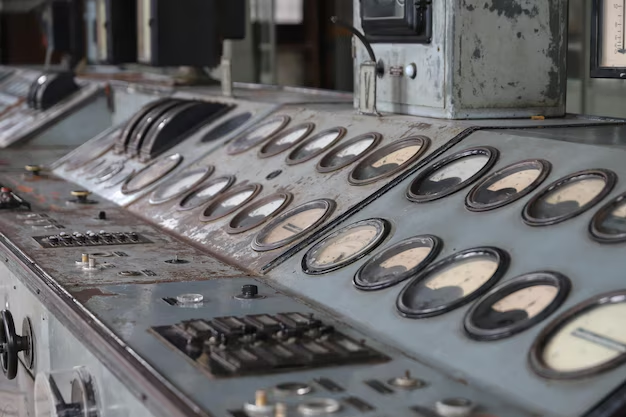What Are Refrigerators Made Of? A Deep Dive into the Anatomy of Your Everyday Appliance
Imagine opening your refrigerator and reaching for your favorite snack. Have you ever paused to wonder about the complex engineering and materials that keep your perishables fresh? Refrigerators are ubiquitous in households worldwide, yet their construction is a fascinating blend of materials and technology. Let’s explore what makes up this vital appliance.
🛠️ Core Components of a Refrigerator
Refrigerators consist of multiple integral components, each made from specific materials tailored to perform distinct functions. Here's a snapshot of the main parts:
1. Outer Shell and Insulation
The outer shell of a refrigerator is typically made of steel or aluminum. These metals provide the necessary strength to hold the structure together and offer protection from external elements. This exterior is often coated with a layer of powder paint for an aesthetically pleasing finish and further durability.
Insulation: Between the inner and outer walls lies the insulation, usually made from polyurethane foam. This material is crucial for maintaining the internal temperature of the refrigerator by minimizing thermal exchange with the outside environment.
2. Interior Lining
The insides of refrigerators are lined with plastic materials, predominantly high-impact polystyrene or ABS plastic. These plastics are chosen for their durability, ease of cleaning, and food-safe properties. They provide a smooth surface that resists moisture and supports easy restocking of your fridge.
3. Shelving and Storage
Most refrigerators are equipped with shelves made of tempered glass or wire mesh coated in vinyl. Tempered glass offers excellent strength and is not easily shattered, while vinyl-coated wire shelves are lightweight, adjustable, and rust-resistant.
4. Refrigeration System
Compressor
This is the heart of the refrigerator’s cooling system. Typically made from materials such as copper, steel, and aluminum, the compressor circulates the refrigerant throughout the system. Copper is particularly valued for its excellent thermal conductivity.
Condensers and Evaporators
Both elements are usually constructed from copper or aluminum tubing. Copper provides excellent thermal transfer capabilities, whereas aluminum is used for its lightweight and corrosion resistance properties.
5. Electrical Components
Refrigerators are equipped with various electrical components for regulating temperature and powering LED lights. The wiring is typically insulated with rubber or plastic, ensuring safe operation even in a moisture-rich environment.
🌡️ Functional Aspects
Building a refrigerator is not just about assembling parts; it's a delicate balance of thermal management, efficient design, and smart control systems. Here's how these elements come together:
Thermodynamics in Play
Refrigerators essentially operate on the principles of thermodynamics, whereby heat is absorbed from inside the unit and dispersed externally. This process involves the circulation of refrigerants—specialized liquids that change states under varying pressures and temperatures. Common refrigerants include R134a and R600a, which are valued for their efficiency and relatively low environmental impact.
Energy Efficiency
Modern refrigerators are designed with energy efficiency in mind. This is achieved through components such as Inverter compressors, which adjust their speed depending on the cooling requirement, reducing energy consumption and noise levels.
Smart Features
Today, refrigerators come with smart technology features like touch screens, internet connectivity, and automated sensors. These features are powered by microprocessors and sensors, often housed in casings made of plastic to ensure their safe integration without affecting the operation of the refrigerator.
🧩 Related Subtopics
With a clear understanding of what refrigerators are made of, let's look at some related subtopics that enhance this knowledge:
Maintenance: Keeping Your Fridge in Top Condition
Regular maintenance of your refrigerator is vital. Common practices include cleaning the coils made of copper or aluminum and ensuring the door seals, typically made from flexible PVC, remain intact. Proper maintenance extends the life of your appliance for years to come.
Tips for Maintenance:
- 🧽 Clean the Interior: Use a mild, non-abrasive cleaner for the plastic interior.
- 🦠 Deodorize Regularly: Place an open box of baking soda to absorb odors.
- 🔌 Check the Seals: Inspect the rubber door seals to prevent cold air leaks.
- 🌡️ Set the Right Temperature: Ensure your fridge is between 37-40°F (3-4°C).
Environmental Considerations
The environmental impact of your refrigerator extends beyond its energy consumption. Manufacturers are increasingly using eco-friendly refrigerants and recyclable materials. Old refrigerators need careful disposal to prevent harmful refrigerants from escaping into the atmosphere. Thus, recycling programs for appliances focus on responsible dismantling and materials recovery.
Innovations on the Horizon
The future of refrigerators is exciting, with advancements aimed at enhancing sustainability and user convenience:
- Solar-powered refrigerators are being developed for off-grid use.
- Self-healing materials that mend scratches or dents automatically.
- Increased usage of biodegradable or recyclable materials.
📋 Key Takeaways
Here's a handy summary to keep the important points in focus:
- 🌿 Materials Used: Steel or aluminum exteriors, plastic interiors, copper or aluminum in cooling systems.
- 🌡️ Energy Efficiency: Result of advanced compressors and refrigerants.
- 🔧 Maintenance: Regular cleaning and seal checks can enhance longevity.
- ♻️ Environmental Impact: Eco-friendly refrigerants and materials recycling.
- 🚀 Innovations: Growing trends in smart tech, eco-friendly designs, and sustainable materials.
Understanding the makeup of your refrigerator not only enhances your appreciation for this household staple but also empowers you to make informed decisions, whether choosing a new appliance or maintaining your current one. The synergy of materials and technology in refrigerators is a testament to human ingenuity, ensuring our perishables stay fresh while we stay sustainable.
